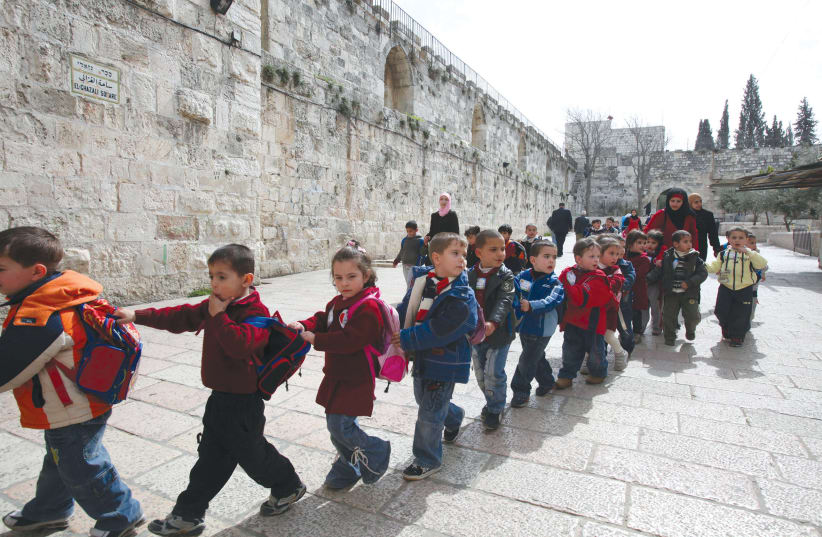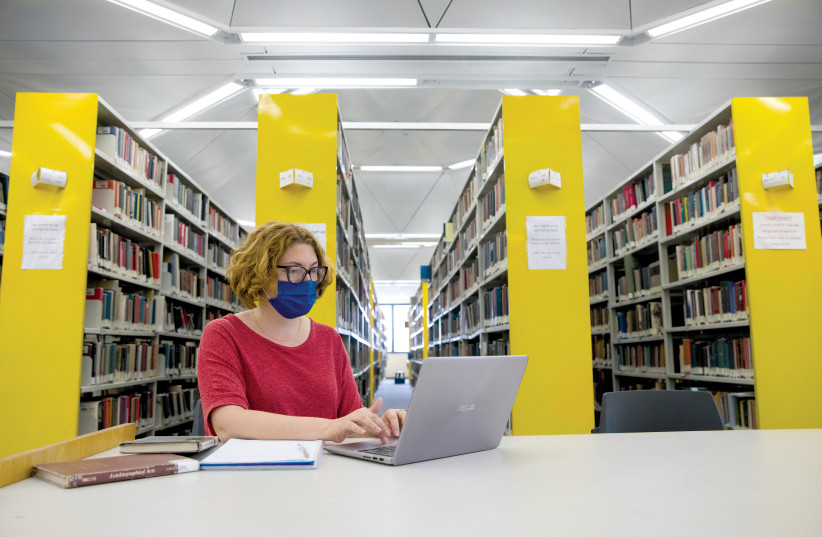Every year, ahead of Jerusalem Day, the veteran and respected Jerusalem Institute for Policy Research issues a collection of statistics and updates that depict the face of the Holy City.
The figure that usually arouses the most interest – and is also a frustrating point among non-haredi politicians and social activists – is the negative migration from the city. But this year, the institute has provided a surprising headline.
Yair Assaf-Shapira and his team’s latest findings challenge one of the most compelling perceptions of the demographic balance between Jews and Arabs – a dramatic decrease in the birth rate among Arab women in east Jerusalem.
Declining Arab birth rates
Throughout the 55 years since the Six Day War, the main concern, perhaps even anxiety, of city leaders and the government has been the fear of losing the demographic superiority of its Jewish residents. While in 1967 the balance was 70% Jewish to 30% Arab, this figure has eroded over the years, now standing at 66% Jewish and 34% Arab.
Yet the dramatic figure for 2020 and even more so based on the initial data available for 2021, is the significant decline in birth rate among Arabs on the east side.
This is the trend throughout the Arab world, explains Assaf-Shapira, “but in the context of Jerusalem, it is certainly a significant figure with implications.”
The decline in births has become a worldwide trend, with the West leading the movement, and in many respects there is no going back. But among the State of Israel’s Jewish population, the trend continues to go in the opposite direction. “There is no example of this figure in the Western world, except for Israel. And it is really not just with the ultra-Orthodox,” adds Assaf-Shapira. “We thought there were different trends between Israel and Jerusalem, but among the Arabs of Jerusalem, again like the Arabs of Israel, fertility is declining.”
“We thought there were different trends between Israel and Jerusalem, but among the Arabs of Jerusalem, again like the Arabs of Israel, fertility is declining.”
Yair Assaf-Shapira
In part due to Jerusalem’s dati and haredi communities, it has now been more than a decade in which Jewish women’s fertility rate is higher than that of Jerusalem Arab women.
The decline in fertility among Jerusalem Arabs has been dramatic, and in the coming years will likely continue to drop. Yet unlike in the rest of the world, the drop is not a result of more women going to work, as the percentage of Arab women in the employment market has remained exceptionally low. But the entire Arab world around us is in exactly the same process of declining birth rates, including in the Palestinian Authority. The high birth rate among the Jewish public in Israel is exceptional and has been recognized all around the world.
Education
In the field of education, while there is still a shortage of classrooms on the east side, unlike in previous years, classrooms are being built, which is substantially closing the gap. In past years, the city could never catch up with the amount of classrooms required due to the high birth rate. The new schools are being filled with children, but this is also due to students in independent and private educational institutions being transferred to the government education system under the supervision of the Education Administration (Manhi) at Safra Square.
Migration
THIS YEAR, the total migration balance – the number of people who moved from other localities to Jerusalem minus the people who moved from Jerusalem to other localities – which stood at 11,000 to 18,800, respectively, was -7,800.
But it’s not that the city is emptying itself, since apart from those being born here, there are new immigrants, as well as Israelis returning from abroad and family reunifications.
Therefore, the comprehensive migration rate stands only at 4,500, according to the report. In general, the migration balance only detracts a marginal percentage from the city population, but does affect Jerusalem’s image, with more educated individuals being the ones likely moving away. Yet the rate of natural growth more than makes up for it.
The migration balance in 2020 thus was quite normal, with the two localities that most Jerusalemites left for being Beit Shemesh and Tel Aviv; and those who came to live in the city were mainly from Bnei Brak, Beit Shemesh and Tel Aviv. ❖

